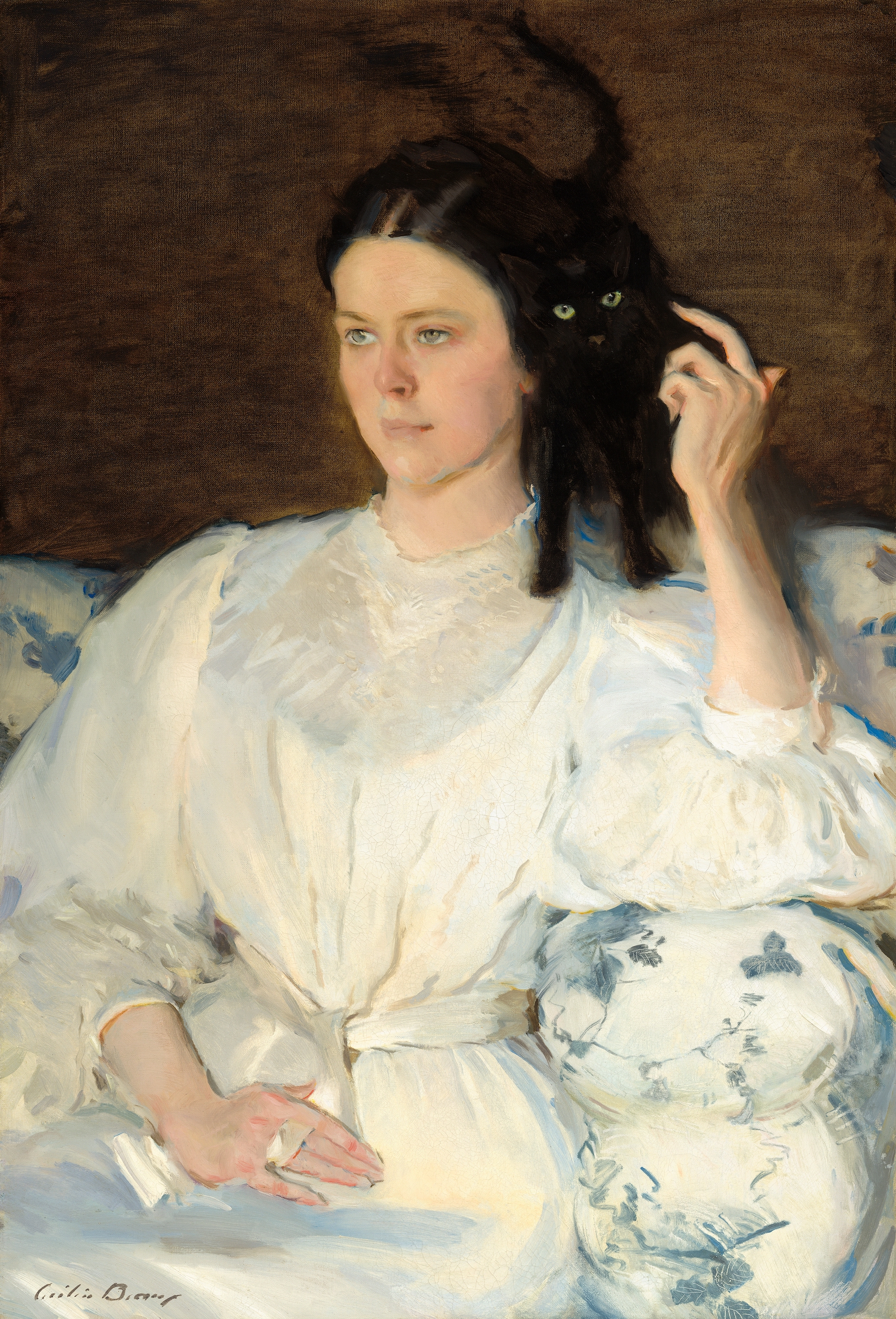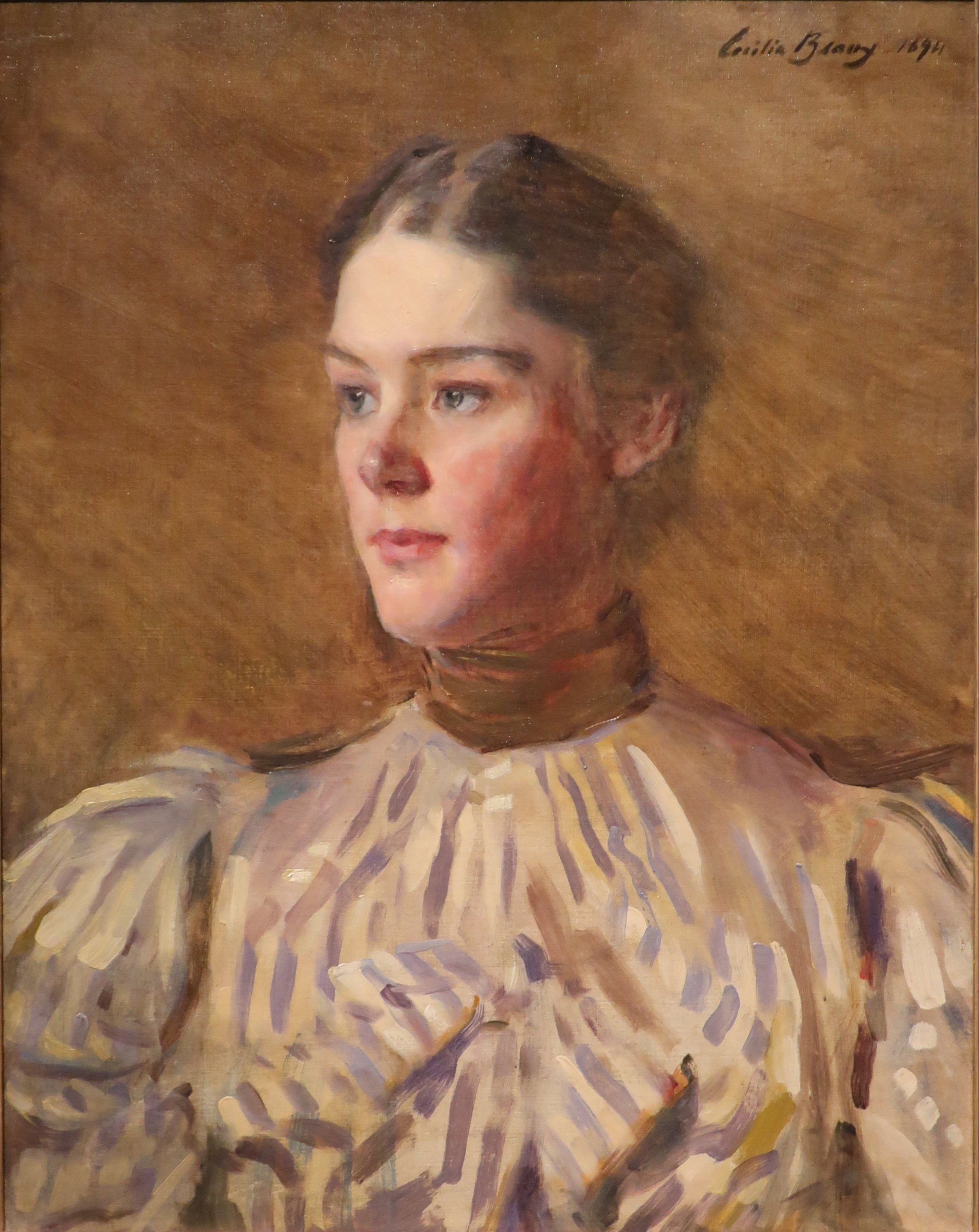Peering out from a dark background and jet-black fur, two gleaming eyes beguile the viewer in Sita and Sarita, chosen in honor of Black Cat Appreciation Day. Painted by American artist Cecilia Beaux, it is a portrait of her cousin Sarah gazing dreamily into the distance while languidly stroking a small black cat perched on her shoulder. Rather than having the cat nestled in Sarah's lap, it is at eye level with her, its black fur melding with her hair and contrasting sharply with Sarah's fair complexion. With its golden eyes fixed on the viewer, the cat virtually steals the scene.
This composition shows influences of Beaux's contemporaries—the rendering of Sarah’s white dress, with folds and shadows in pale blues, grays, and browns, harkens to works of Impressionist artist Mary Cassatt (who Beaux met while studying in Paris), while the limited color palette is a nod to James McNeill Whistler.
Beaux painted two identical versions of Sita and Sarita. She made the first in 1893, eventually donating it to a museum in France. It is now housed in the Musée d’Orsay in Paris. Nearly 30 years later, prior to parting with the painting, she created today's image for herself. It now resides in the National Gallery of Art in Washington, D.C.
So, who is who in this charming scene? Beaux used Spanish diminutive forms of endearment in her title—Sita means “little one” and refers to the cat while Sarita is a nickname for Sarah. Note that the kitty gets top billing.
- Martina Koegan
P.S. Do you love cats in art history as much as we do? Here are some delights for you: cutest cats in art and Tsuguharu Foujita, the cat master. <3


 Cecilia Beaux
Cecilia Beaux